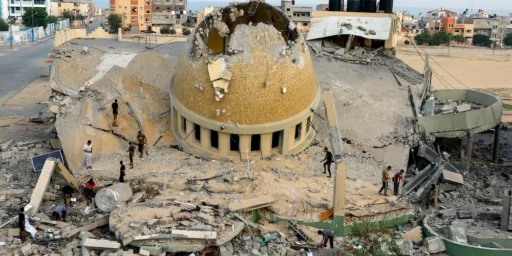CASUALTY EVALUATION
WaPo has a terrific analytical piece this morning: Casualties: Low Number, Many Causes. It has been noted many times that our casualties have been extremely light given the undertaking, but this puts it into perspective:
The current conflict, like the 1991 war, has produced remarkably few U.S. deaths, compared with most wars in American history. The casualties in the invasion that began last month include 108 dead, 14 captured and missing and 399 wounded, in the Pentagon’s most recent public count, out of about 250,000 troops. That is about 1 of 480 soldiers deployed in the war. From World War I through Vietnam, the ratio of casualties hovered consistently at about 1 of 15 soldiers. The casualties in the current conflict would be lower except for a single day — March 23 — when 22 members of the U.S. forces were killed near the southern Iraqi town of Nasiriyah and an additional seven were left missing in action. Compared with those of U.S. troops, Iraqi military casualties are thought, conservatively, to number several thousand. But firm numbers are impossible to ascertain because the U.S. military says it makes no attempt to calculate such figures.
Something that was very unexpected–certainly by this analyst–is this:
“The optimists who were predicting light casualties thought they would be light because there wouldn’t be any urban warfare,” said Stephen Biddle, a professor of national security studies at the Army War College. “We got urban warfare without the heavy casualties.”
While I knew US forces were better at urban warfare than anyone, simply because we devote the resources to training, I had no idea they had advanced to anywhere near this level of proficiency. Indeed, I just presumed we would avoid urban combat–which I still envisioned as door-to-door fighting–altogether.
The demography of those killed certainly belies some common notions of who’s serving:
At the same time, officers accounted for one death in five — a large share, compared with past wars, caused in part by the fact that several helicopters, invariably containing men of officer rank, have crashed.
Women have largely been spared. The only female soldier to die was Pfc. Lori Piestewa, 23, a member of the Hopi Indian tribe who was missing, and then found killed, after an ambush of an Army maintenance company on March 23, the war’s deadliest day for U.S. troops.
In many ways, the mosaic of casualties is a microcosm of the country: The soldiers who have died came from 36 states, including two from Maryland and four from Virginia, though none from the District. About 40 percent of the troops who have been killed came from the South, reflecting that region’s relatively large presence in the military overall.
Of the 80 whose race could be determined, about one-fourth were black — compared with about one-fifth of the military and about 12 percent of the U.S. population. At least 13, or about 16 percent, were Hispanic, compared with about 9 percent of the military and 12 percent of the country.
Ten of the dead were still teenagers, and seven were over 40.
The other interesting, if unsurprising, trend noted in the article is the relatively small portion of the deaths that came from actual enemy fire. A related trend, one that is understandable although disturbing, is that the military goes out of its way to classify deaths as combat-related even when they are not. Undertandable, because the next of kin would usually prefer that their loved on died in combat rather than from a freak accident; disturbing because it cheapens the heroism of those who do die in combat.
The print edition has a two-page color spread called Faces of the Fallen, with a timeline and color photos of all 108 Americans who have died in theater since the war started.





I disagree with your comment about not exactly combat related deaths being classified as such.
I think the reason why I disagree with it is that all people who serve nowadays are volunteers, so wether or not they die because of direct enemy fire or not, I think that they are all heroes. Heroism isn’t defined by the mere fact you take a bullet. Also, it seems our forces have more to fear from friendly fire than from the bad guys.
In addition, you’re forgetting that it is quite possible to serve a lifetime in the military in this day and age and never see combat. Quite recently I met a SF Seargeant who said he had been in for 18 years and never saw combat once. He’s done “police actions” in certain areas, but never had participated in a so-called “War”. So, is he less of a hero?
Or are you trying to say just infantrymen and pilots can be heros because they are the ones on the front lines? I guess that supply clerks can’t be heroes then? So, it’s the MOS or branch you’re in and not the uniform that makes one a hero?
—